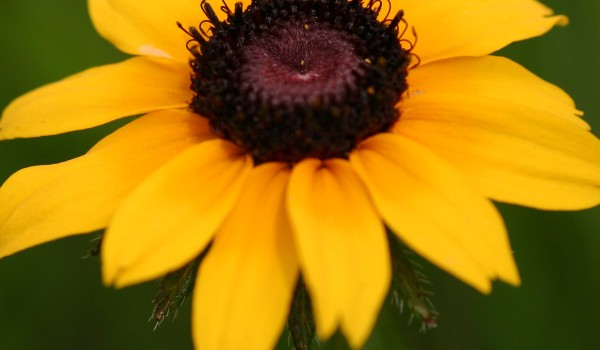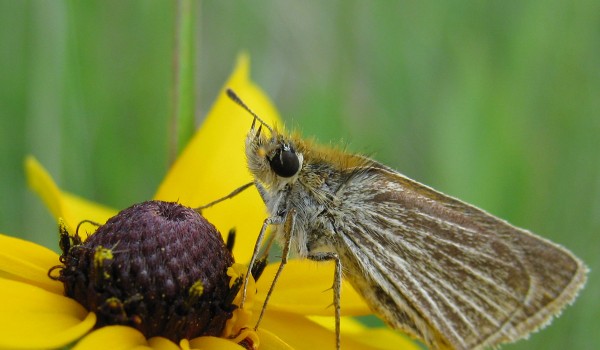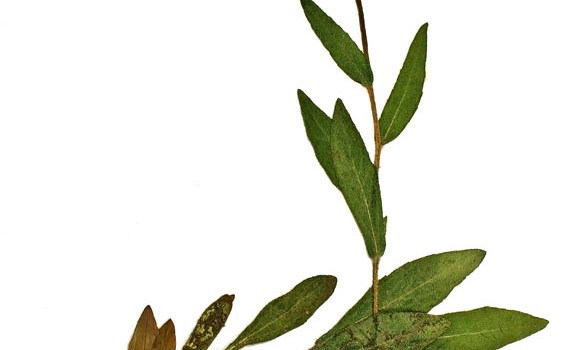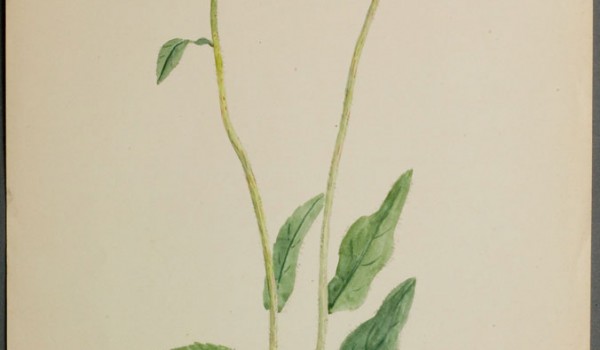Aster (Asteraceae)
Black-eyed Susan
Rudbeckia hirta L.Black-eyed Susan is a familiar summer-blooming wildflower. Its hairy leaves are adapted to retain water, and its flowers can be used to make a yellow dye. This plant is thought to be poisonous to sheep, pigs, and cattle. It is however, very attractive to the bees, flies, butterflies, and beetles that feed on its nectar and pollen. The fruiting heads also provide seed for birds over the winter.
Flower Colour:
- Yellow
Flowering Season:
- Summer
- Fall
Flowering Months:
- August
- July
- June
- October
- September
Canadian Rarity Status:
Not rare. Listed as “exotic” in six of the ten Canadian provinces in which it occurs.
Physical Appearance:
This short-lived perennial has hairy, green and purplish stems that grow to 150 cm tall. Stems are in clumps of 1-4, and may be slightly branched. Greyish, alternate leaves are oval to lance-shaped, hairy, and larger at the base of the stem than further up. Its flowering heads occur on the ends of stems. They consist of brown disc flowers on a cone-shaped central disc, surrounded by many yellow ray flowers. Fruits are dry, 4-sided, ribbed, and single-seeded.
Similar Species:
Prairie Coneflower, Common Tickseed (Coreopsis tinctoria Nutt.)
Gardening Notes:
Seeds and/or plants are typically available from greenhouses and seed supply companies specializing in native plants. They are good for butterfly, woodland, and prairie/meadow gardens, and attract birds, butterflies, and bees. These plants are easy to grow from seed or divided plants.
Canadian Distribution:
- Alberta
- British Columbia
- Manitoba
- New Brunswick
- Newfoundland/Labrador
- Nova Scotia
- Ontario
- Prince Edward Island
- Quebec
- Saskatchewan
Prairie Types:
- Fescue Prairie
- Mixed Grass Prairie
- Tall Grass Prairie
Habitats:
- Open Woodlands
- Prairies
- Roadsides
Moisture Conditions:
- Dry
- Moderate
- Moist
Light Preference:
- Full Sun
- Part Shade
Soil Preference:
- Loam
- Sand
Associated Pollinators:
-
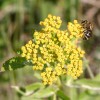 Andrenid Bees, Miner/Digger Bees (Andrenidae)
Andrenid Bees, Miner/Digger Bees (Andrenidae)
-
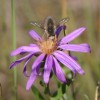 Bee Flies (Bombyliidae)
Bee Flies (Bombyliidae)
-
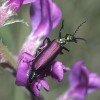 Blister Beetles (Meloidae)
Blister Beetles (Meloidae)
-
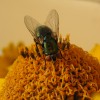 Blow Flies (Calliphoridae)
Blow Flies (Calliphoridae)
-
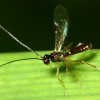 Braconid Wasps (Braconidae)
Braconid Wasps (Braconidae)
-
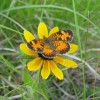 Brush-footed Butterflies (Nymphalidae)
Brush-footed Butterflies (Nymphalidae)
-
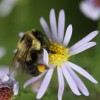 Bumble, Honey, and other Bees (Apidae (Subfamily Apinae))
Bumble, Honey, and other Bees (Apidae (Subfamily Apinae))
-
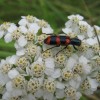 Checkered Beetles (Cleridae)
Checkered Beetles (Cleridae)
-
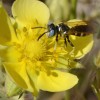 Crabronid Wasps (Crabronidae)
Crabronid Wasps (Crabronidae)
-
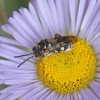 Cuckoo Bees (Apidae (Subfamily Nomadinae))
Cuckoo Bees (Apidae (Subfamily Nomadinae))
-
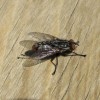 Flesh Flies (Sarcophagidae)
Flesh Flies (Sarcophagidae)
-
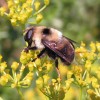 Flower Flies (Syrphidae)
Flower Flies (Syrphidae)
-
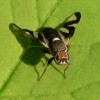 Fruit Flies (Tephritidae)
Fruit Flies (Tephritidae)
-
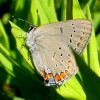 Gossamer-winged Butterflies (Lycaenidae)
Gossamer-winged Butterflies (Lycaenidae)
-
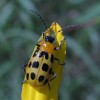 Leaf Beetles (Chrysomelidae)
Leaf Beetles (Chrysomelidae)
-
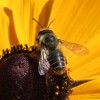 Leafcutter and Mason Bees (Megachilidae)
Leafcutter and Mason Bees (Megachilidae)
-
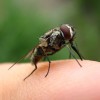 Muscid Flies (Muscidae)
Muscid Flies (Muscidae)
-
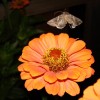 Owlet Moths (Noctuidae)
Owlet Moths (Noctuidae)
-
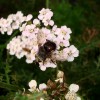 Parasitic Flies (Tachinidae)
Parasitic Flies (Tachinidae)
-
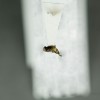 Picture-winged Flies (Otitidae)
Picture-winged Flies (Otitidae)
-
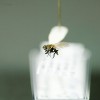 Root Maggot Flies (Anthomyiidae)
Root Maggot Flies (Anthomyiidae)
-
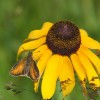 Skippers (Hesperiidae)
Skippers (Hesperiidae)
-
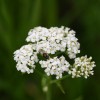 Soldier Flies (Stratiomyidae)
Soldier Flies (Stratiomyidae)
-
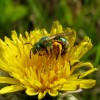 Sweat Bees, Halictid Bees and other Bees (Halictidae)
Sweat Bees, Halictid Bees and other Bees (Halictidae)
-
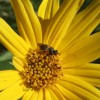 Thick-headed Flies (Conopidae)
Thick-headed Flies (Conopidae)
-
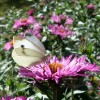 Whites, Sulfurs, Orangtips, Marbles (Pieridae)
Whites, Sulfurs, Orangtips, Marbles (Pieridae)
-
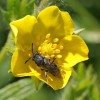 Yellow-faced Bees (Colletidae)
Yellow-faced Bees (Colletidae)
-
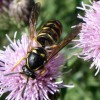 Yellowjacket, Potter, and other Wasps (Vespidae)
Yellowjacket, Potter, and other Wasps (Vespidae)






